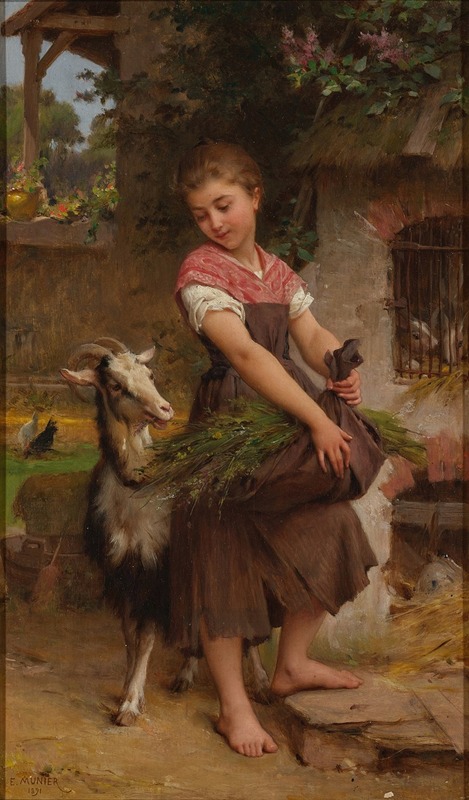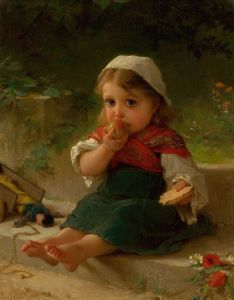
The Little Sheperdess
A hand-painted replica of Émile Munier’s masterpiece The Little Sheperdess, meticulously crafted by professional artists to capture the true essence of the original. Each piece is created with museum-quality canvas and rare mineral pigments, carefully painted by experienced artists with delicate brushstrokes and rich, layered colors to perfectly recreate the texture of the original artwork. Unlike machine-printed reproductions, this hand-painted version brings the painting to life, infused with the artist’s emotions and skill in every stroke. Whether for personal collection or home decoration, it instantly elevates the artistic atmosphere of any space.
Émile Munier was a French academic artist known for his detailed and realistic portrayals of children and domestic scenes. One of his notable works is "The Little Shepherdess," a painting that exemplifies his skill in capturing the innocence and charm of childhood. Munier was born in Paris on June 2, 1840, and studied under the renowned artist William-Adolphe Bouguereau, whose influence is evident in Munier's meticulous attention to detail and use of soft, luminous colors.
"The Little Shepherdess" is a fine example of Munier's ability to depict tender and idyllic scenes. The painting portrays a young girl, presumably a shepherdess, in a pastoral setting. She is often depicted holding a staff or surrounded by sheep, emphasizing her role and connection to the pastoral life. Munier's work is characterized by its serene and gentle atmosphere, capturing the simplicity and tranquility of rural life.
Munier's paintings often reflect the 19th-century European fascination with rural and pastoral themes, which were seen as a counterbalance to the rapid industrialization and urbanization of the time. His works are celebrated for their technical precision and the warmth and humanity they convey. "The Little Shepherdess" is no exception, as it showcases Munier's ability to blend realism with a sense of idealized beauty.
Throughout his career, Munier exhibited his works at the Paris Salon, where he gained considerable recognition. His paintings were well-received for their technical excellence and the emotional depth they conveyed. Munier's ability to capture the innocence of childhood and the beauty of everyday life earned him a place among the respected artists of his time.
Munier's style is often compared to that of his mentor, Bouguereau, as both artists shared a similar approach to composition and subject matter. However, Munier's works are distinct in their focus on intimate and personal scenes, often featuring children and animals in harmonious settings. This focus on the personal and the intimate is what sets Munier apart and makes his work particularly appealing to audiences.
"The Little Shepherdess" continues to be appreciated for its artistic merit and the way it encapsulates the essence of Munier's work. It remains a testament to his skill as a painter and his ability to evoke emotion through his art. Munier's paintings, including "The Little Shepherdess," are held in various private collections and continue to be studied and admired by art enthusiasts and scholars alike.
Émile Munier passed away on June 29, 1895, but his legacy lives on through his art, which continues to captivate and inspire. His work remains a significant part of the 19th-century academic art movement, and "The Little Shepherdess" is a prime example of his contribution to this genre.


















